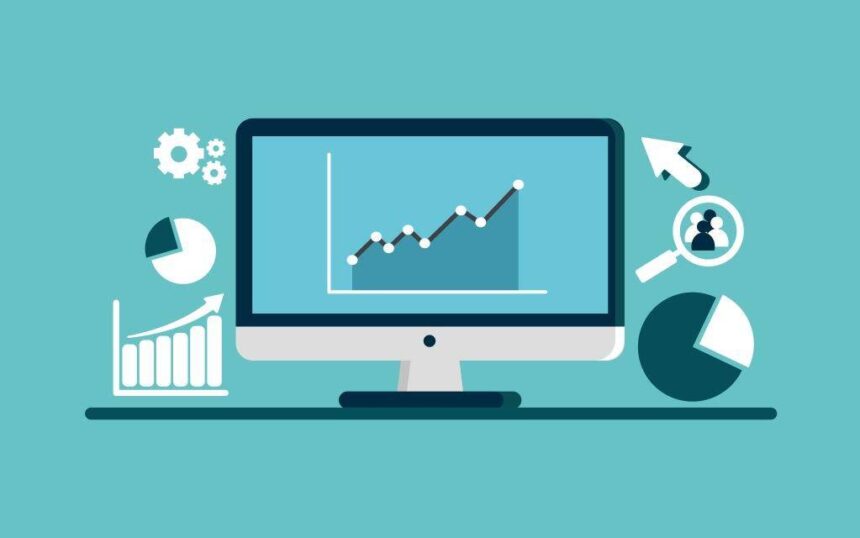Big data has turned the software industry on its head. The relationship between software development and big data is a two-way street. While many software developers are looking to create new applications that use big data, they are also using big data to streamline development.
Almost every piece of hardware has software running in the back-end and almost every trivial task is handled by software nowadays. Big data is changing the algorithms that are used in software.
With that being said, understanding the right software development methodology becomes a very important task for every company. Maryville University emphasizes the importance of using big data to streamline software development in its post Where Big Data and Software Development Collide.
Big data software development models vary depending on the ultimate purpose, scale, and other constraints. Using a specified data-driven model/ methodology that considers these factors is key to ensuring a successful deployment of the software.
The software development market expects to have a turnover of approximately $500 billion by 2022. Big data tools are playing an important role in this growth, since they are expediting the development and delivery of new software applications.
Waterfall Software Development Methodology with Big Data
The waterfall software development process is a methodology that can be used when the steps involved are straightforward and successive. In a waterfall model, developers move in a uni-directional manner and complete tasks one after another in a chain-like manner. They use unique machine learning tools and big data platforms to streamline the process as much as possible.
The stages involved in this big data software development methodology include:
- Requirement Analysis: The development team looks into the client’s requirement and takes into account the purpose, budget, time frame and other constraints to establish a complete understanding of the software. They use complex data analytics tools to acoomplish this.
- Design: Once the requirement is understood clearly, mockups are designed keeping in mind the programming language and the architecture. The appropriate databases are also decided upon in this stage.
- Development: This is where the program gets built. The development team codes and builds the software by breaking it into different units that are tested individually. In the end, it is compiled and kept ready for testing as a whole. Big data helps compilers operate more efficiently.
- Testing: The most important stage of the development process is the testing stage. Here the final product is tested and debugged until it is fit for deployment, keeping in mind the requirements decided at the start.
- Maintenance: Once released to the client, the developers then work to maintain the software and debug any new bugs found as the software is used in real-life. Maintenance and testing determine the longevity of the software.
Advantages of Waterfall Methodology
- Easier to monitor and troubleshoot
- Unlikely chance of new expenses
- Proper documentation
Disadvantages of Waterfall Methodology
- Not very flexible
- No visible product until the end
Scrum Software Development Methodology
This software development model is employed in more complex projects. In a Scrum model, each phase is worked on, completed and reviewed separately.
In such a methodology, additional roles such as Product Owner, Scrum Master, and Scrum team exist.
- Product owner: Responsible for communicating the client requirement. It can be an individual from either the client or the development team.
- Scrum Master: Responsible for coordinating the complete project from start to finish.
- Scrum team: Responsible for developing, designing and testing the software. They report to the scrum master.
The stages involved here include:
- Product Backlog Creation: The team creates a backlog that documents all the features of the software. Each feature is called a User Story and each story has three features – Importance, Estimate, and Demo.
- Sprint Planning and Backlog Creation: Each sprint is given a time frame, keeping a healthy balance between release time and stability.
- Sprint and Scrum Meetings: During the Sprint, scrum meetings allow the scrum master to understand where his/her team stands in the development stage. The software development team brings up issues (if any) and resolves them during such meetings, allowing for a seamless development process.
- Testing and Demo: Here the developers test the software, release the demo, and fix the bugs to ensure a satisfactory product for the client.
- Sprint Review: This is an analysis of the completed sprint. The team makes changes if necessary, plans the next Sprint session and repeats the cycle.
Advantages of Scrum Methodology
- Very flexible
- Simple
- Involves more cooperation
Disadvantages of Scrum Methodology
- Expensive
- Ineffective for small scale
- More training required
Spiral Methodology
Such a model is employed for large-scale projects that take into account risk management.
The stages involved here include:
1. Planning: This is the initial stage that determines the objective, requirements, costs, time frame of the project.
2. Analysis of Risk: The team analyzes the risk and find solutions for existing problems.
3. Engineering: Here the development and testing take place. In some cases, they employ the Waterfall model at this stage.
4. Evaluation: The team evaluates the final product, makes changes, and the cycle repeats.
Iterative Methodology
This is a more effective model than the Spiral methodology. Here, the complete requirements need not be laid out on the table before development begins.
The team works on each unit with the specification provided at that stage and comes back to review the requirements for the next unit as the development progresses.
The stages involved here include:
1.Initial Planning: The team determines the project outline and decides on a vague description and time frame.
2. Planning: The team defines and plans each part as per requirements. This repeats for every unit until the project is completed.
3. Design and Analysis: They write and compile the code for each unit of the software.
4. Testing: The team debugs the unit.
5. Evaluation: They correct any issues at this stage. During the evaluation of a particular unit, the planning for the next unit begins.
6. Deployment: The team completes the entire software and releases it to the client and/or the general public.
Big Data is Crucial for New Software Development Processes
Big data has become very important for software development. No software can be developed successfully without a model. A data-driven development model gives the developers a guide to follow and ensure that milestones can be set to prevent slacking during the development of the software.
The Waterfall model is used for straight-forward projects that do not require extensive flexibility. Big data tools have made it far more efficient.
The Scrum model is used for more complex projects that are large-scale.
The Spiral and Iterative models are alternatives that are not widely used.
Big Data is Crucial for New Software Development Processes
Big data has become very important for software development. A growing number of developers are using machine learning and other big data technologies to streamline the development and deployment of new software products. This can lead to greater scalability in the software industry in the years to come.










